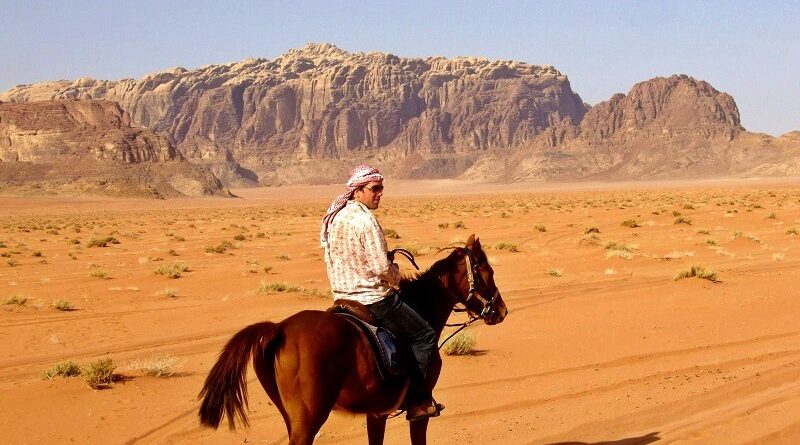Wadi Rum Desert: Horse Riding in Lawrence of Arabia’s Footsteps
This travel guide covers my two-day horse riding trip through the Wadi Rum Desert, following in the footsteps of Lawrence of Arabia.
From Aqaba to the Wadi Rum Desert
After a relaxing time on the sunny coastline of Aqaba, I took a JETT bus north, travelling deeper into Jordan.
Although I was heading directly to Petra this time, my bus made a stop at the small village of Wadi Rum, bringing back fond memories of my earlier trip to Jordan, when I stayed there for a couple of days.
During my days backpacking around the world as a university student, I once embarked on an epic overland journey from Istanbul to Jerusalem via Syria and Jordan, which also included a two-day horse-riding trip in the Wadi Rum Desert.
It was certainly an unforgettable adventure, and although I strongly considered repeating it on my current trip revisiting Jordan, I ultimately decided against it, knowing from experience that it’s often best to cherish great travel memories rather than attempt to relive them, as the chances of disappointment are high given the lofty expectations set during the first time.
The story and most of the pictures you’ll find below recount that horse-riding trip from more than a decade ago, so consider it more a source of inspiration than a recent experience.
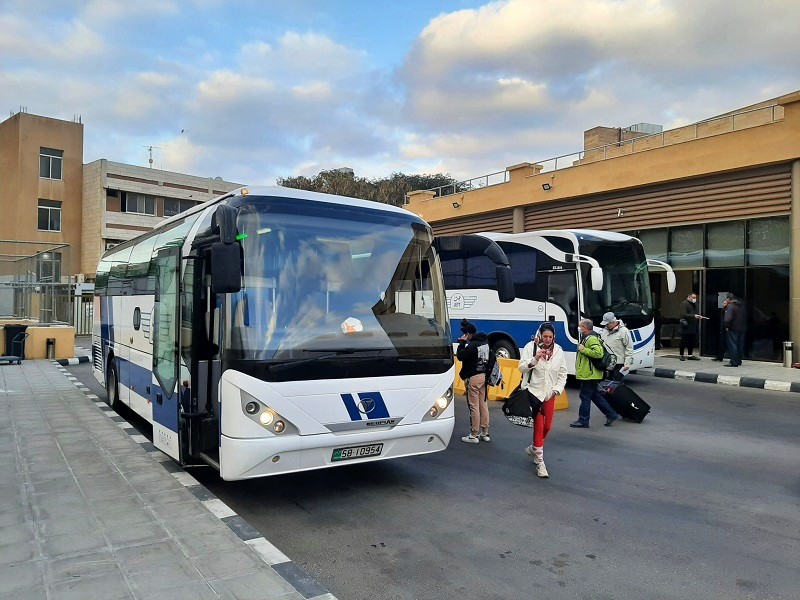
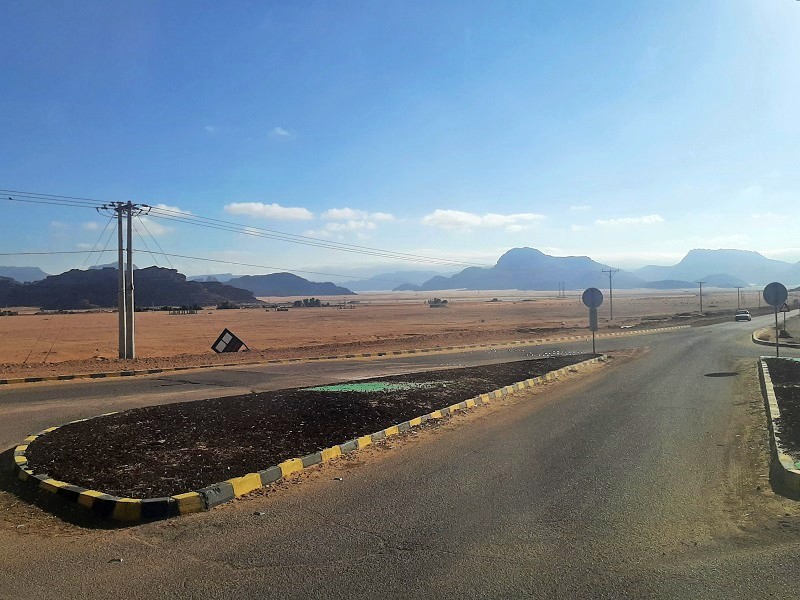
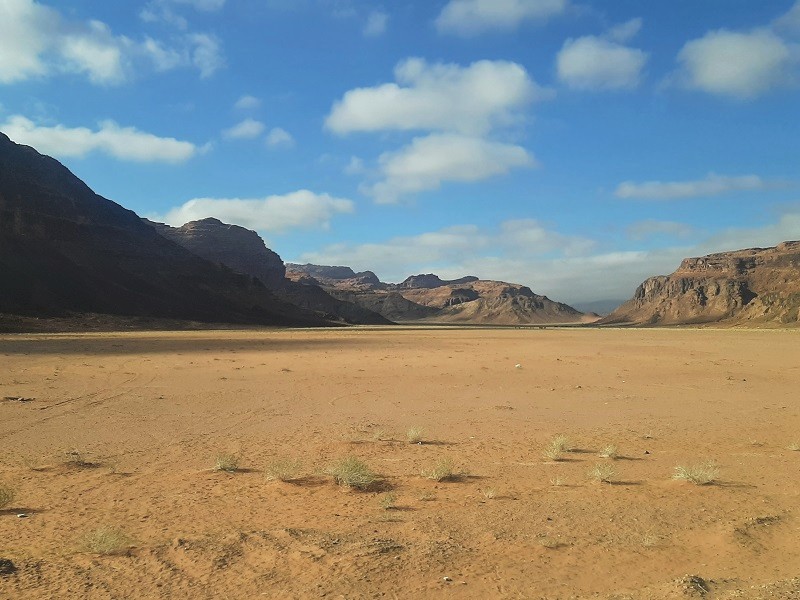
Wadi Rum Village
Wadi Rum Village, located at the end of the tarmac road, serves as the hub for desert excursions such as horse and camel riding, as well as sightseeing trips by jeep or other 4WD vehicles.
The village has several Bedouin campsites where you can sleep in tents, along with guesthouses, hotels, and a few basic supermarkets and restaurants.
As there is no bank or ATM in Wadi Rum Village, you should bring enough cash for the duration of your stay, ensuring you budget enough money for food, drinks, accommodation, and all excursions.
Unsurprisingly, most local shops are tailored to tourists, so you can expect to pay a bit more than in Aqaba or Amman.
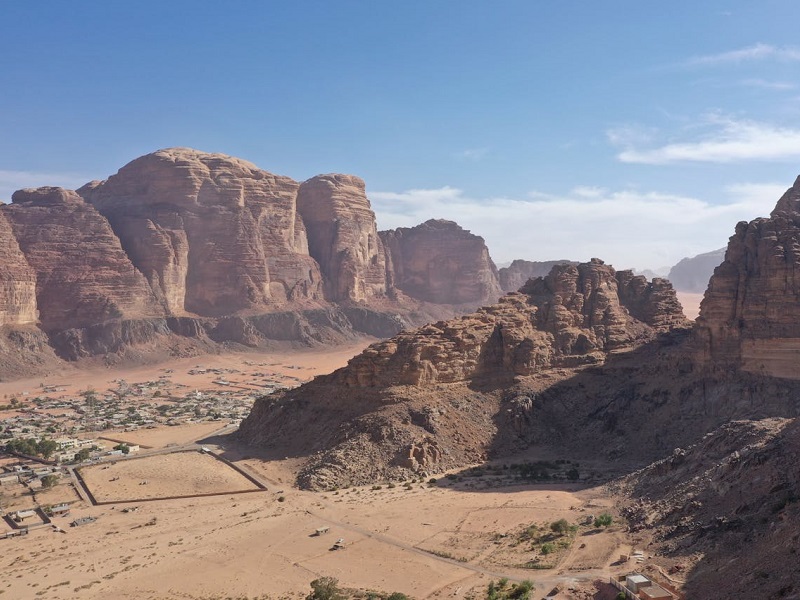
At the stables
For my Wadi Rum horse-riding adventure, I had contacted Atallah at Rum Horses, about whom I had read online that he could arrange such trips through the Wadi Rum Desert.
We had arranged to meet at his stables in the early morning, having agreed on a price of 130JD (€145, according to the exchange rate back then) for a two-day trip with overnight accommodation and food included, a price that has without doubt likely increased significantly due to inflation.
To repeat, my experience is from more than a decade ago, so although I had a great time on my trip, I can’t say whether recent reviews are still as positive, and I’m not even sure if Atallah is still offering horse-riding tours today!
While Atallah was readying the horses, I had a look around the stables and the impressive rock formations surrounding the village.
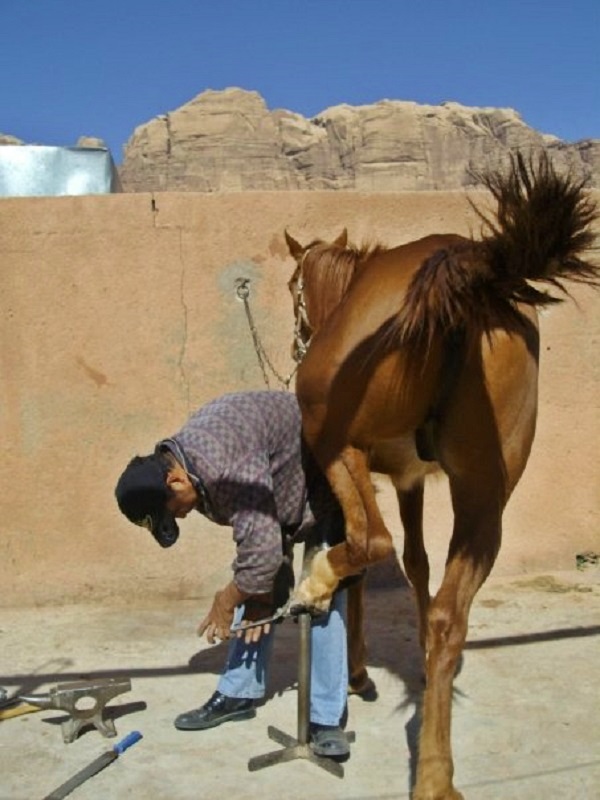
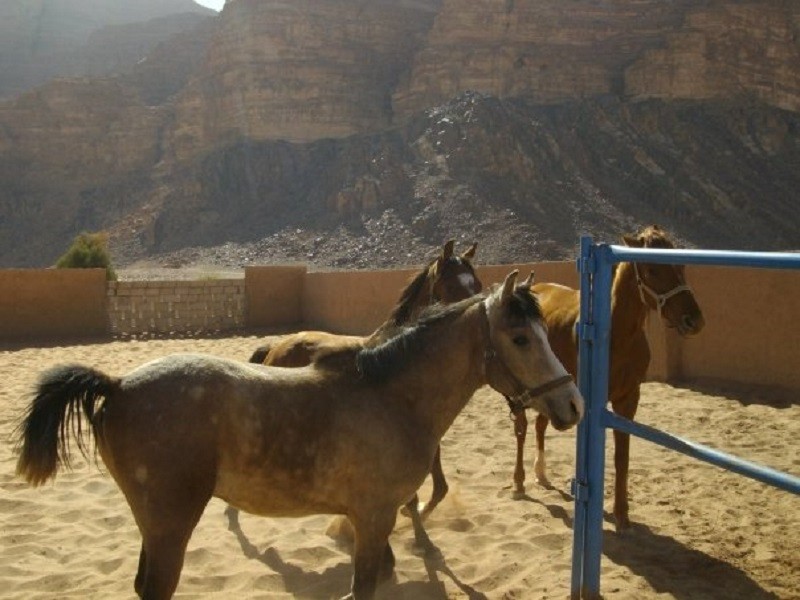
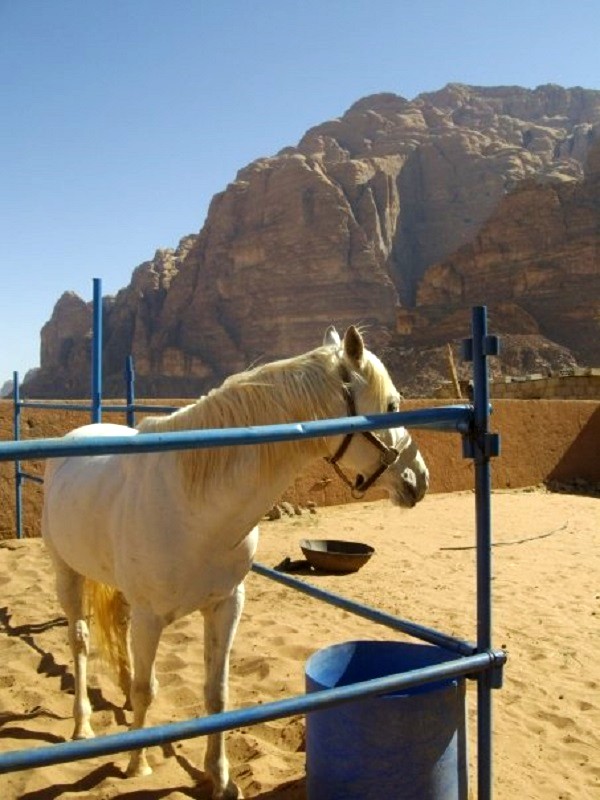
Horse riding into the Wadi Rum Desert
Although I’ve been on horseback a few times before, I’m certainly not the most experienced rider, and this two-day journey through the Wadi Rum Desert marked my first long trek on horseback.
For most of the trek, we kept to a walking pace, but on certain stretches, we galloped at full speed, which was certainly exciting.
Riding on horseback offers an entirely different perspective from which to enjoy the magnificent scenery of the Wadi Rum Desert, with its many impressive outcrops.
You don’t need much imagination to picture yourself riding alongside Lawrence of Arabia and his Bedouin tribesmen, who spent several months in the Wadi Rum Desert, making it their basecamp during his campaign against the Ottoman forces in the Middle Eastern theatre of the First World War.
Seven of the most iconic rock formations in the Wadi Rum Desert are collectively known as the Seven Pillars of Wisdom, a reference to the autobiographical book of the same name by British Army Colonel T. E. Lawrence, better known as Lawrence of Arabia.
Note however that the naming of the rocks as the Seven Pillars of Wisdom is a modern-day invention by savvy Jordanian tourism officials, and not the other way around, as T. E. Lawrence was of course referring to the Biblical seven pillars of wisdom mentioned in Proverbs 9:1 and not to any rock formations.
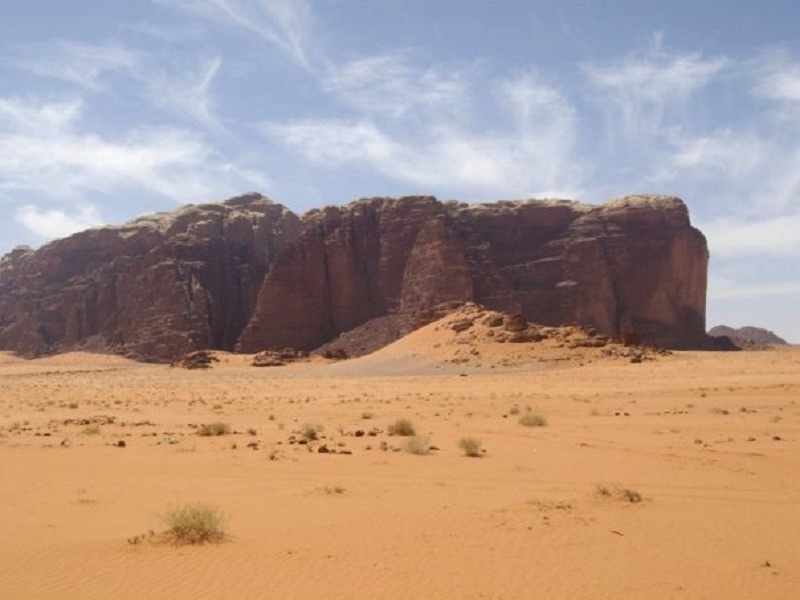
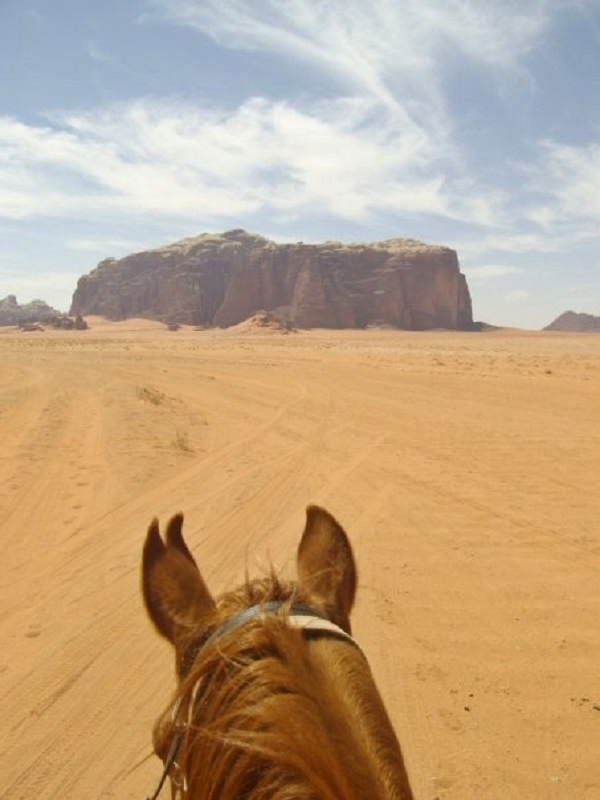
Camels
Most of the ride through the desert was in complete silence, and the Wadi Rum Desert around us appeared rather lifeless, even though this is, of course, not really the case.
Occasionally, a Jeep carrying tourists on a Wadi Rum sightseeing tour would drive wide around us at high speed, and I couldn’t help but think how much more civilised the slow ride on horseback was.
We also passed some lone camels a few times, and although I had no idea whether they were wild camels or just domesticated ones left to roam the desert in peace, they were quite a majestic sight.
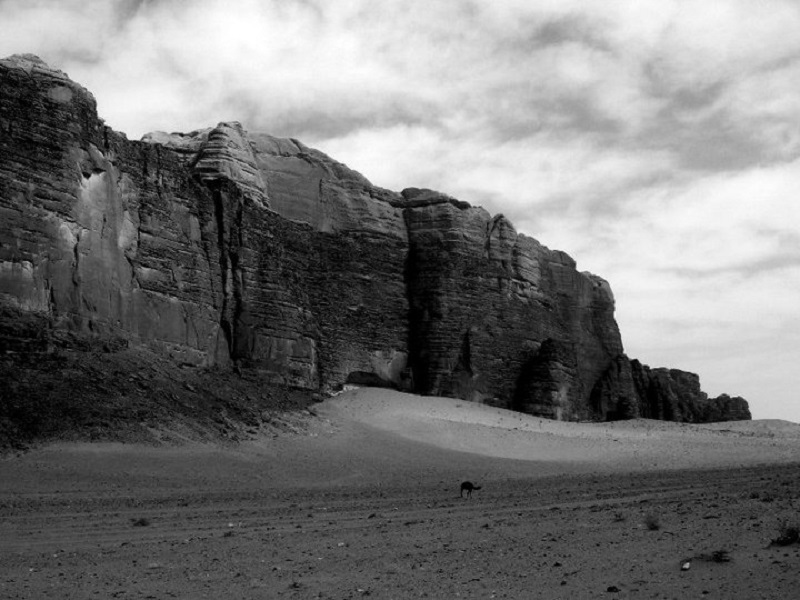
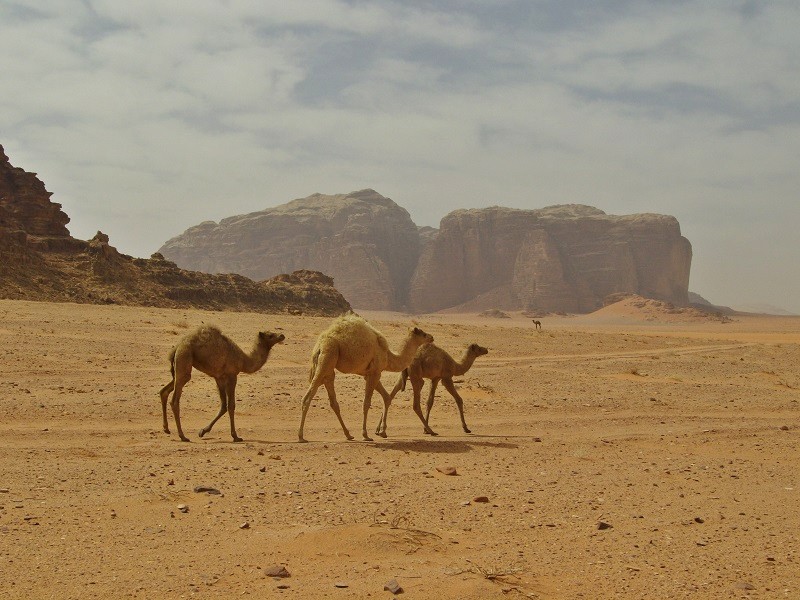
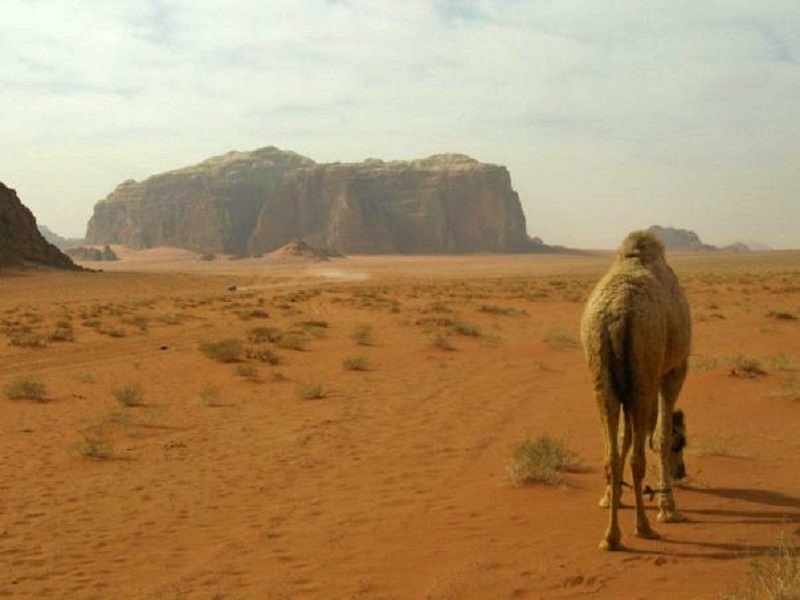

Tea break
If you want to go horse-riding in the Wadi Rum Desert, late autumn to early spring is clearly the best time to do so, as temperatures in the desert will still be relatively mild.
That said, when I embarked on my two-day tour in late March, it certainly felt warm enough in the blazing sun.
To protect ourselves from the sun and give our horses a rest, we stopped for tea and a short siesta in the shade of a rock.
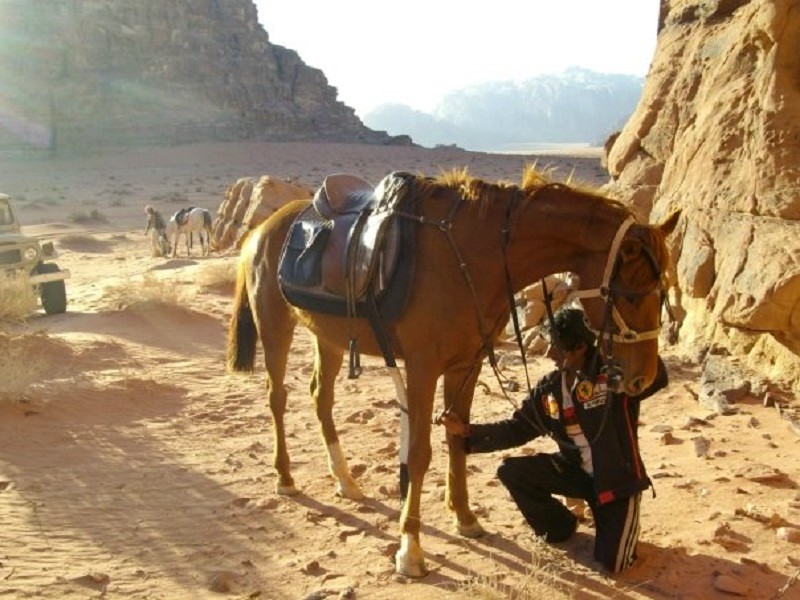
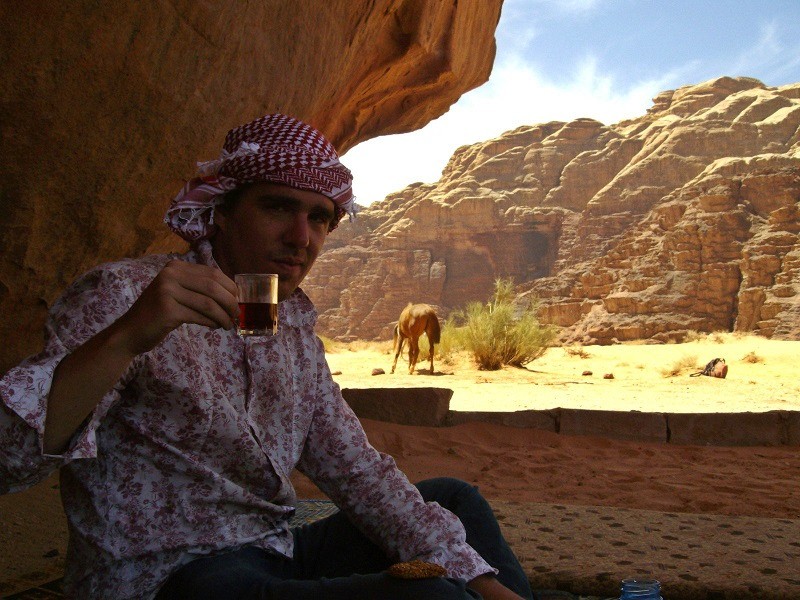
Wadi Rum Desert sights
There are a couple of impressive natural sights in the Wadi Rum Desert that any experienced guide will be able to point out and include on your horse-riding tour.
These Wadi Rum sights are mostly special rock formations and sand dunes, although they also include historic locations like Lawrence’s House, which isn’t actually a house but rather its remains in the form of a pile of stones and a partial wall, where Lawrence of Arabia is said to have sheltered on a few occasions.
By far the most impressive sight we came across on our horse-riding trip through the Wadi Rum Desert was the Um Frouth Rock Arch, a natural stone bridge you can actually climb if you’re not afraid of heights and don’t mind a bit of exercise.
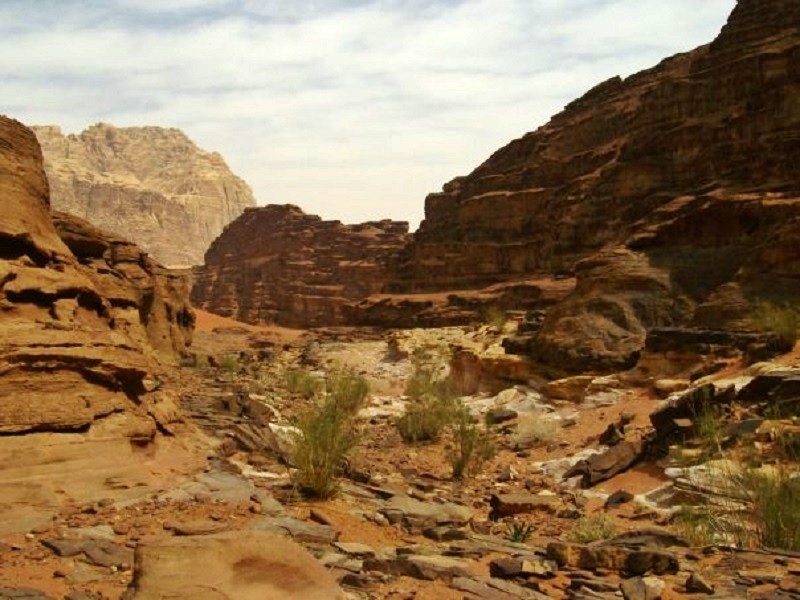
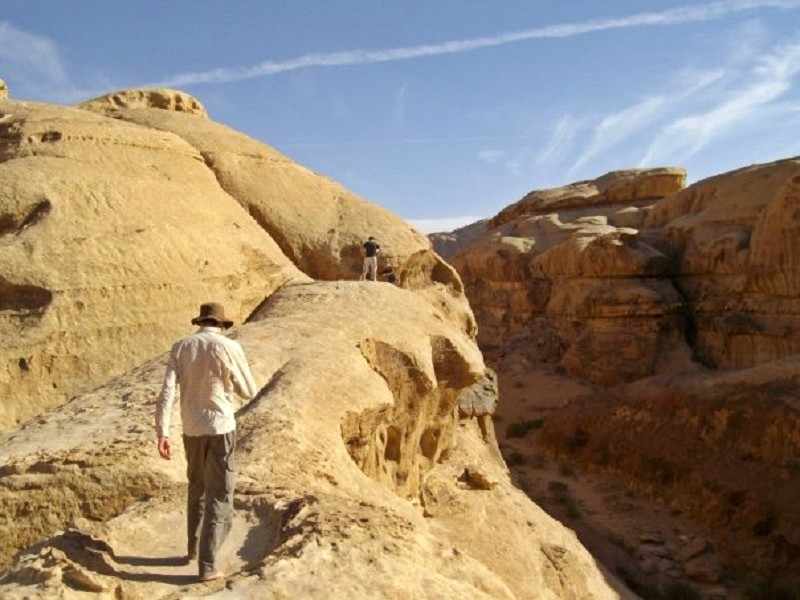
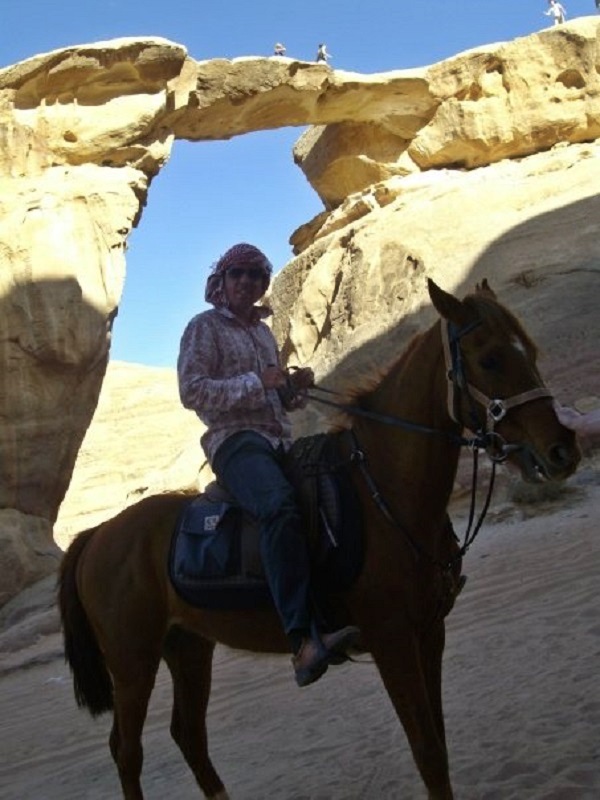
To the overnight camp
Having climbed up to the rock arch, I got back on my horse for the last few kilometres of riding for the day.
As the sun slowly began to set, the desert started to glow in even more beautiful shades of orange and red.
This is one of the great advantages of exploring the Wadi Rum Desert on horseback or by camel, as you can take in the surroundings and the changing colours and scenery over time much better than you would from a car.

Overnight camp
Almost all Wadi Rum tour outfits have their own overnight camps somewhere in the desert, complete with tents and rudimentary toilets for their guests.
This typically includes one large tent serving as a communal lounge and dining room, along with smaller tents as individual accommodation units, where mattresses and sleeping bags or blankets are usually provided.
Although most Bedouin nowadays primarily live in stone houses like everyone else, this was the historic way many of them used to live, and these traditions are still maintained.
While Atallah and some of his colleagues, who had just driven in by jeep, were setting up the camp, I enjoyed a cup of tea or two while taking in the fabulous sunset views over the Wadi Rum desert.
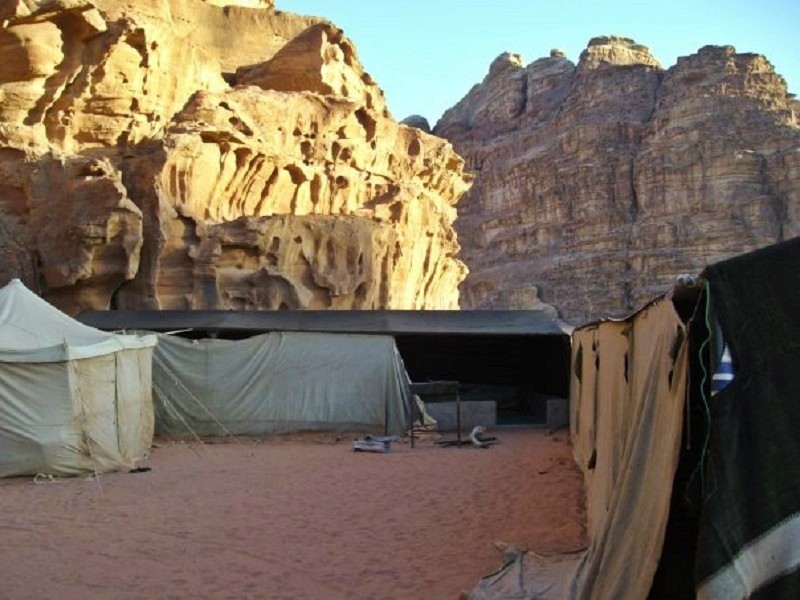
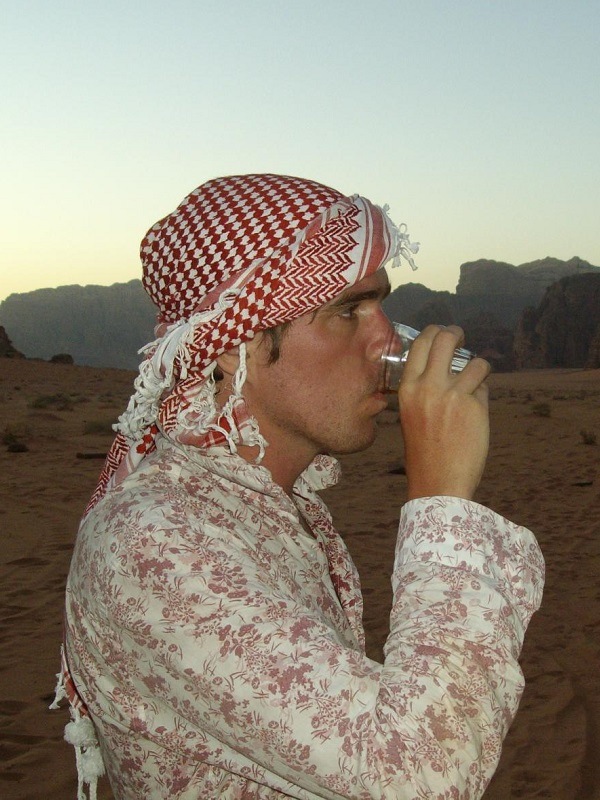
Dinner
We had to wait for a while before we could start dinner, as, apart from Atallah and myself, some Americans were also joining us at the overnight camp after completing their day of sightseeing by jeep.
Once they arrived, the barbecue was lit, and some delicious meats were grilled over the charcoal fire.
Afterwards, we spent a few hours smoking sheesha (waterpipe) and playing guitar in front of a campfire, which was a perfect way to end what had already been a fantastic day.
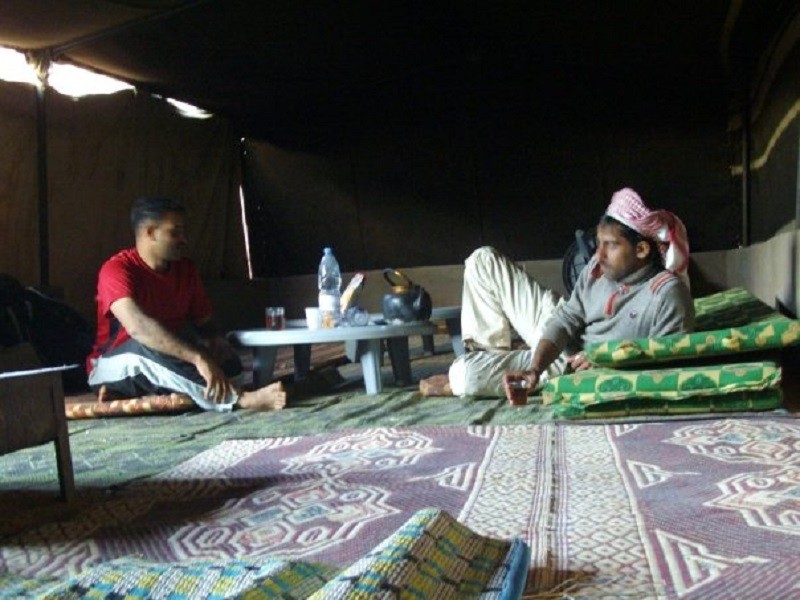
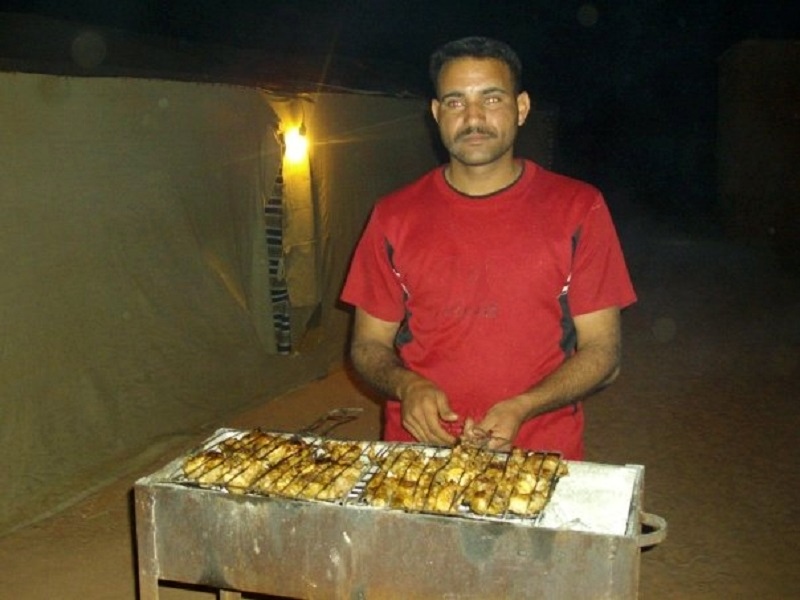
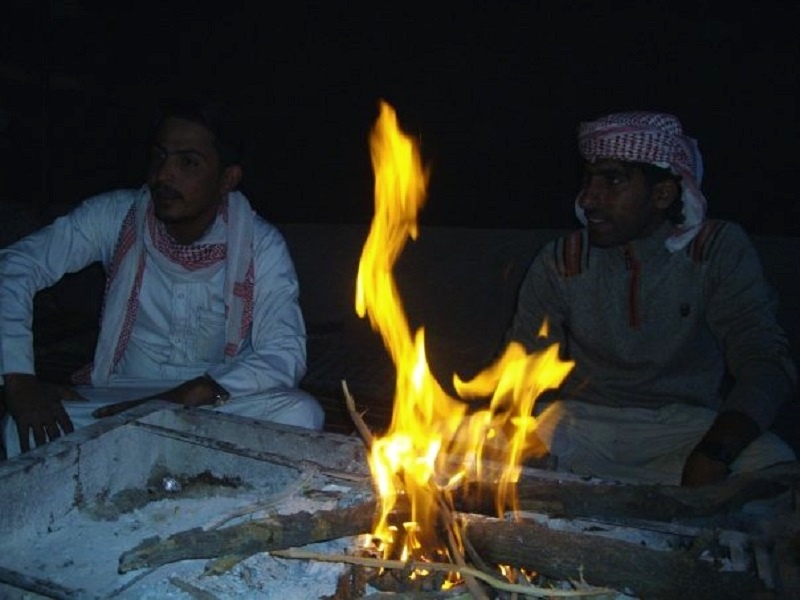
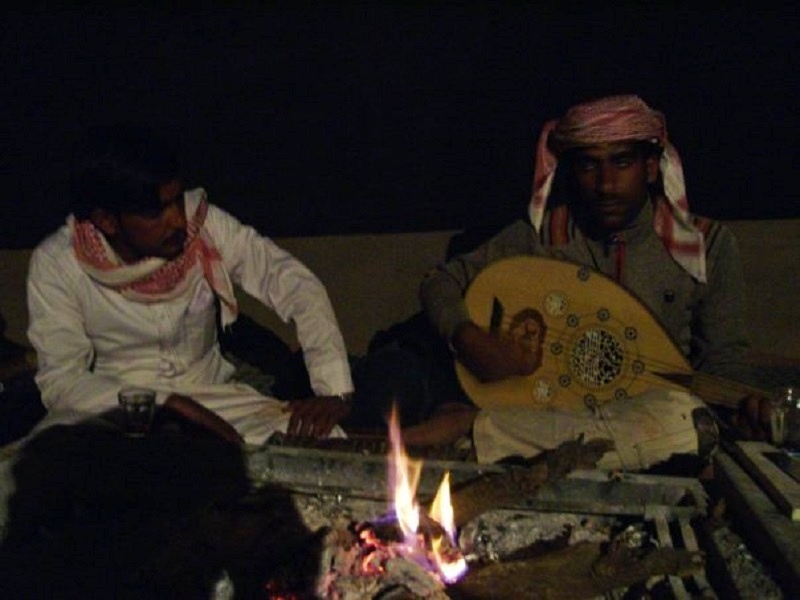
Back to Wadi Rum Village
Although I had a great night’s sleep in my desert tent, my body felt absolutely knackered after the previous day’s horse riding.
I could certainly tell I wasn’t a very experienced horse rider and had never done such long-distance rides before, as my behind was hurting like hell, even when I was sitting down on the soft pillows for breakfast.
That said, I was still looking forward to the final leg of the horse riding, even though we would now be heading more or less straight back to Wadi Rum Village.
Indeed, the final moments of horse riding through the desert were great fun as well, although my body was somewhat relieved to have finally completed the trip once we arrived back in the village!
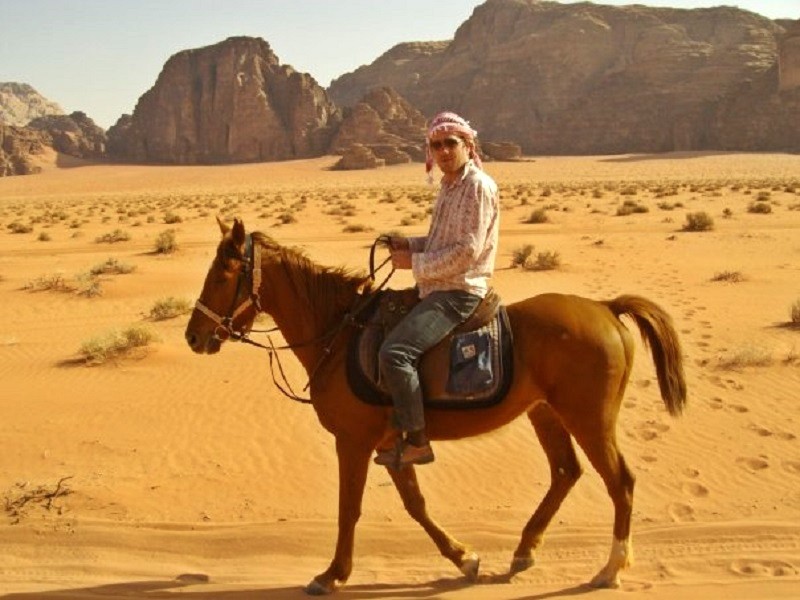
Conclusion
With views of impressive rock formations and the vast expanse of red sands, horse riding through the Wadi Rum Desert is a great adventure.
Although you can explore the natural wonders of the Wadi Rum Desert by going on a jeep tour, the proper way to travel is on horseback or by camel, just as Lawrence of Arabia and the local Bedouins did over a century ago.
I strongly recommend spending at least two days in the Wadi Rum Desert and sleeping one night in a Bedouin tent camp to fully immerse yourself in the wild terrain.
Watching the sun set over the desert while sipping a cup of tea and sitting around a campfire beneath starry skies is an experience you’ll likely never forget.
Arriving there after hours of horse riding, rather than a brief jeep ride, makes the experience even more special.
Trip report index
This article is part of the ‘Journey Across Jordan: From Aqaba to Petra and Amman‘ trip report, which consists of the following chapters:
1. Subsidised Flights: Why Airline Tickets to Jordan Are So Cheap
2. The Jordan Pass: Save Money and Time on Your Jordan Trip
3. Exploring Aqaba, Jordan’s Seaside Resort City
4. Jordan Bus Travel: Amman, Aqaba, Petra, Wadi Rum by JETT Bus
5. Wadi Rum Desert: Horse Riding in Lawrence of Arabia’s Footsteps (current chapter)
** rest of the chapters to follow soon **

